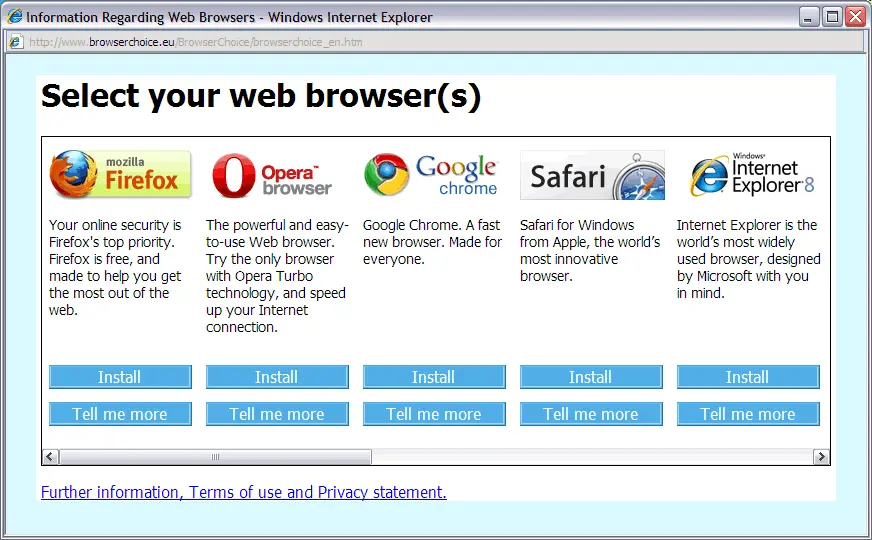Related: GTA games are full of parody companies and brands with childish humour and, yes, there’s a sportswear brand in GTA called ProLaps. Their motto is “Strain Hard”.
- 0 Posts
- 137 Comments
“…and she never even saw the license plate.”
Corrections:
MacOS:
- Featureless Apple™-branded oblong with 195% profit margin (support for 160% profit margin dropped in Apple™ Mac™OS™ 12.8.3.1.6.4 West Coast Yuppie Resort)
- Devices no more than two years old
- No pride, self-respect, personality, etc, except that provided by ownership of Apple™ products.
For Windows:
- CPU generation newer than an arbitrary, shifting and easily-bypassed watershed.
- 1, 2, 4, 16 or 128GB of RAM, depends who you ask.
- Windows License 😉
- Copilot+ AI requires Microsoft CoPilot+ AI compatible Microsoft CoPilot+ AI CoProcessor+ and Microsoft CoPilot+ CoProcessor+ AI Microsoft CertificAItion+
- A lack of awareness or interest in operating systems.
For Linux:
- Turing-completeness.
- Memory, networking, inputs, outputs, power (optional).
- Another computer to occasionally Google who ‘initramfs’ is and why he won’t let you boot.

 2·16 days ago
2·16 days agowinget install -e --id Mozilla.Firefox --accept-package-agreementsalready works prefectly.

 2·16 days ago
2·16 days agoCan you raise both your arms above your head? Do you smell burnt toast?

 5·16 days ago
5·16 days agoNetscape.

 21·16 days ago
21·16 days agoAnyone else remember this badboy?

For the uninitiated, BrowserChoice.eu was a popup and associated website that Microsoft was forced to create by the EU courts becasue of their monopoly in 2010.
Also, an opinion: Edge was a great browser even before they switched to Chromium. I wish they’d kept at it so there was a better variety of rendering engines out there.

 81·26 days ago
81·26 days agoTgese Nuts lmao gottem

 8·2 months ago
8·2 months ago“Lies”. Just “lies”.

 7·2 months ago
7·2 months agoWow. For real, I always just assumed that .com was the commercial arm of .org. Holy shit.
Edit: So, for anyone curious, .com is owned by Automattic, who also own Tumblr, Beeper, PocketCasts and Buddy Press. The WordPress project and .org are owned by the WordPress Foundation. Automattic makes some contributions to the WordPress project but they and the WP Foundation are seperate.

 22·2 months ago
22·2 months agoRefresh abdomen

 23·3 months ago
23·3 months agoDemand GDPR. No ifs, no buts. Its even written in several languages.

 9·3 months ago
9·3 months agoI mean, joking aside, isn’t that how parity calculations used to work? “Got more uppy bits than downy bits - that’s a paddlin’” or something.

 11·3 months ago
11·3 months agoI read “daters” as “dealers” and I ran the whole gamut of emotions in about a half second.

 9·3 months ago
9·3 months agoNo. Yes. Kind of.
My home setup is three ProLiant towers in a ProxMox cluster. One box handles all-the-time stuff like OpenWRT, file server, email, backups, and - crucially - Home Assistant and is UPS protected because of how important it’s jobs are. The other two are powered up based on energy costs; Home Assistant turns them on for the cheapest six hours of the day or when energy costs are negative and they perform intensive things like sailing the high seas, preemptive video transcoding, BOINC workloads and such. The other boxes in the photo are also on all the time basically being used as disk enclosures for the file server and they are full of mismatched hard disks that spend virtually all their time asleep. At rest the whole setup pulls about 35-40W.

Flip them on and off repeatedly to put them in pairing mode.
If you took away the majority of the bacon this wouldbea really good breakfast👍🏽
Bang! Bang! Bang! Bang!



For locked-down devices, they’ll be running LTSC or LTSB editions (Long-Term Support Channel/Branch), or Windows Embedded, which are simplified and heavily customisable versions of Windows. For general-purpose devices, they’ll be using Pro or Enterprise versions of Windows which, crucially, support Group Policy. Using GP it is very, very easy for a single admin to configure an arbitrarily large number of Windows machines to work exactly how they want them to work, including configuration options that aren’t otherwise exposed to the end user in any way.
Edit: just to add: the lack of an equivalent of Group Policy is what is preventing Linux becoming widespread in businesses. If you think you know of a service for Linux that works like Group Policy, then you don’t know Group Policy.